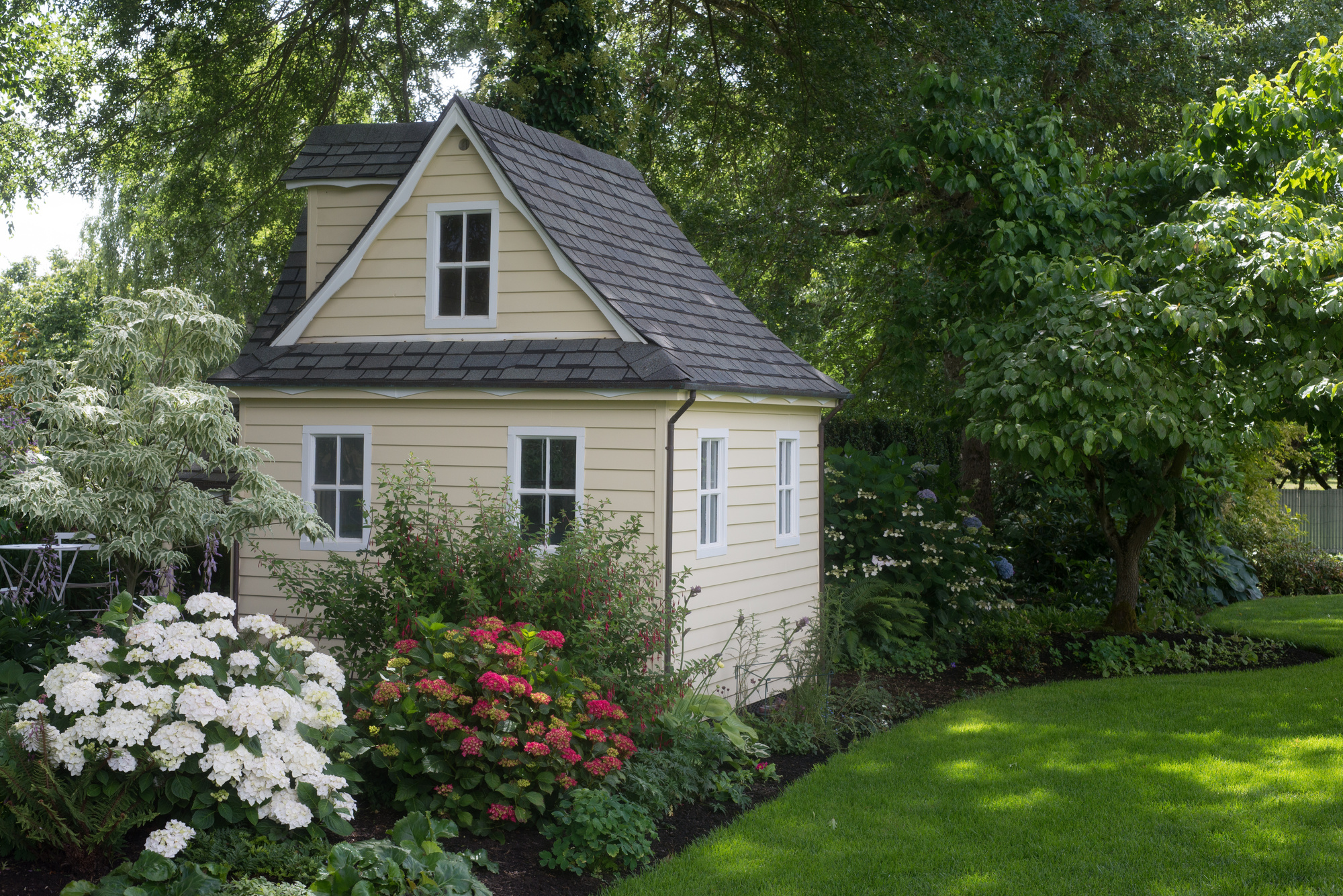
A charming playhouse cottage sits at the edge of a shaded perennial garden.
Did you know that 55% of tiny house owners have more money saved than the average American?
A tiny house can help you save money in various ways; one of the most significant benefits is reducing your electricity bill and carbon footprint with an eco-friendly tiny house.
If you want to design a tiny house that doesn’t cost the planet, it pays to do a little research beforehand. That’s where our helpful guide comes into play. From design to job completion, we’ll help you on the way to eco-friendly tiny living.
Read on to find out everything you need to know.
Go Solar
Solar energy is an excellent power solution for your tiny house, especially if you intend to live off the grid. It is also much less expensive to purchase a tiny living solar array than one for a domestic building. You should check out your local solar company when designing your home.
Solar panels can be installed on the ground, the roof, or even on sun-exposed walls. Solar energy helps you save money on your energy costs and is an excellent choice for people who wish to keep maximum flexibility with their tiny house while also protecting the environment.
Use Recycled Materials
Because a tiny house requires fewer resources than a conventional building, it allows for the use of more recycled materials. Using reused materials, such as pallet wood, is not only more visually appealing but also more environmentally responsible.
Choose recyclable paper or old fabric rather than foam and fiberglass for your insulation. Recycled cardboard insulation is created by combining treated paper and cardboard. Non-flammable fabric insulation is another environmentally friendly option for keeping your tiny house warm in the winter and cool in the summertime.
Remember Heat Efficiency
Choosing the proper heating unit for your tiny house is critical to energy efficiency. If you get too big of a unit, you’ll be opening the shutters and squandering heat. A heater that doesn’t have enough capacity for its job, on the other hand, is useless. You should use a thermal unit calculator to determine the appropriate size heater to serve your tiny house.
Consider what type of fuel you will be using to heat your home as well. There are many less carbon-intensive fuel options available today. Ensure you’re heating and powering your home with renewable materials to guarantee minimal environmental impact.
Design a Tiny House Today
So, that’s the 101 on how to design a tiny house with eco practices.
Following this guide will make for modern, comfortable tiny living which doesn’t cost the earth and holds resale value for years to come. With tiny homes growing in popularity and eco-consciousness more relevant than ever, now is the time to act.
Did you enjoy this article? If so, be sure to check out the rest of our blog for everything you need to know about construction, business, lifestyle, and much more.
